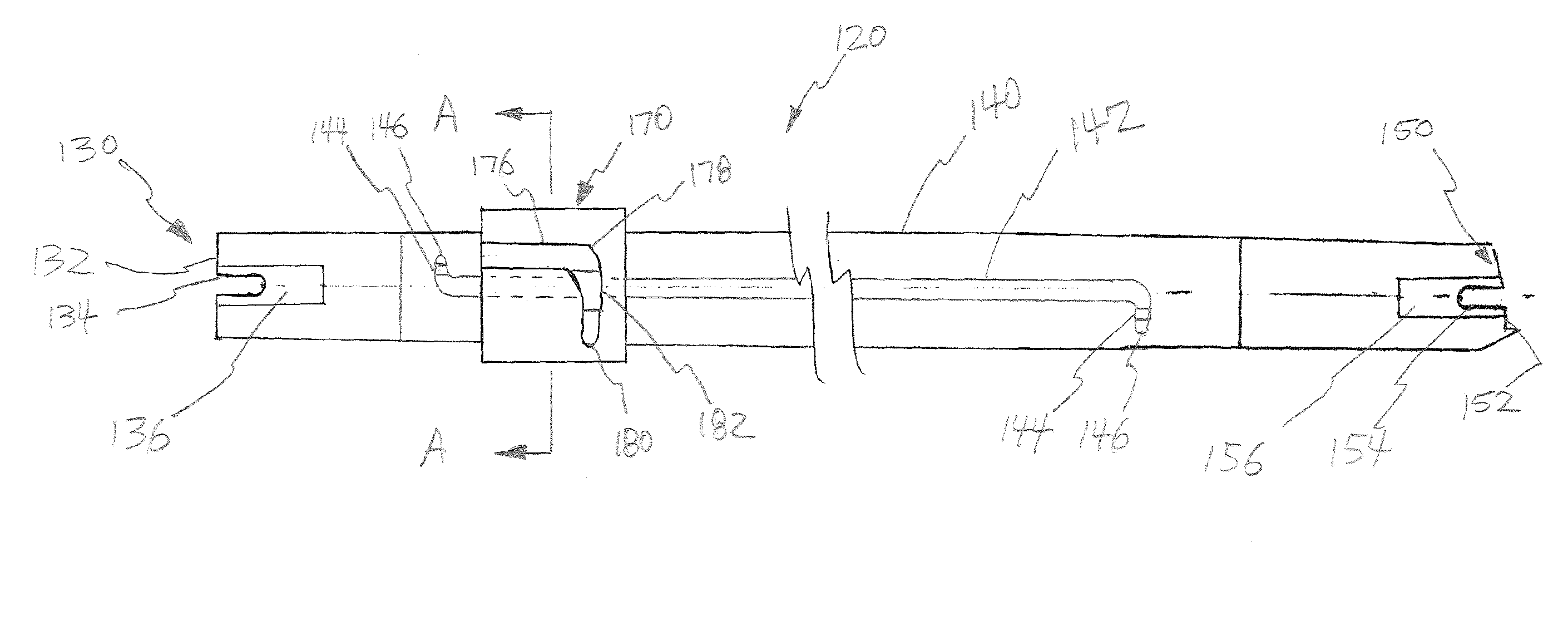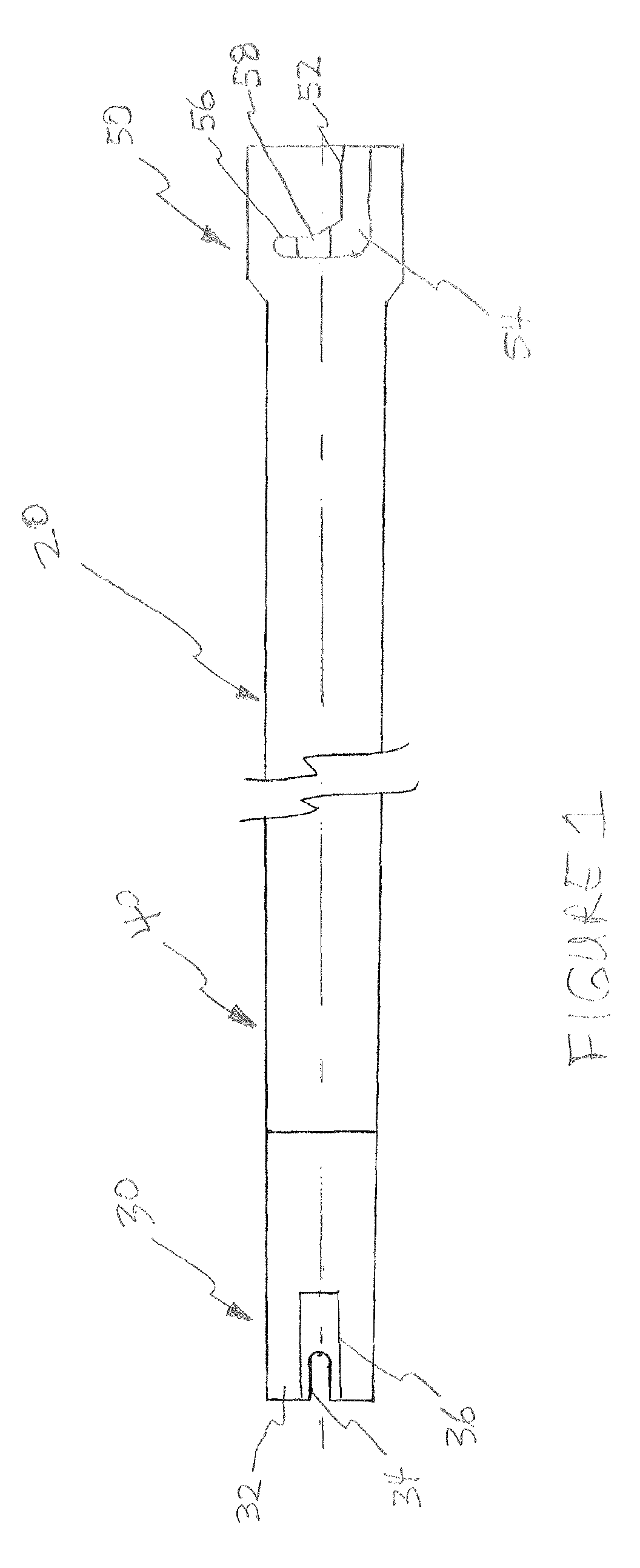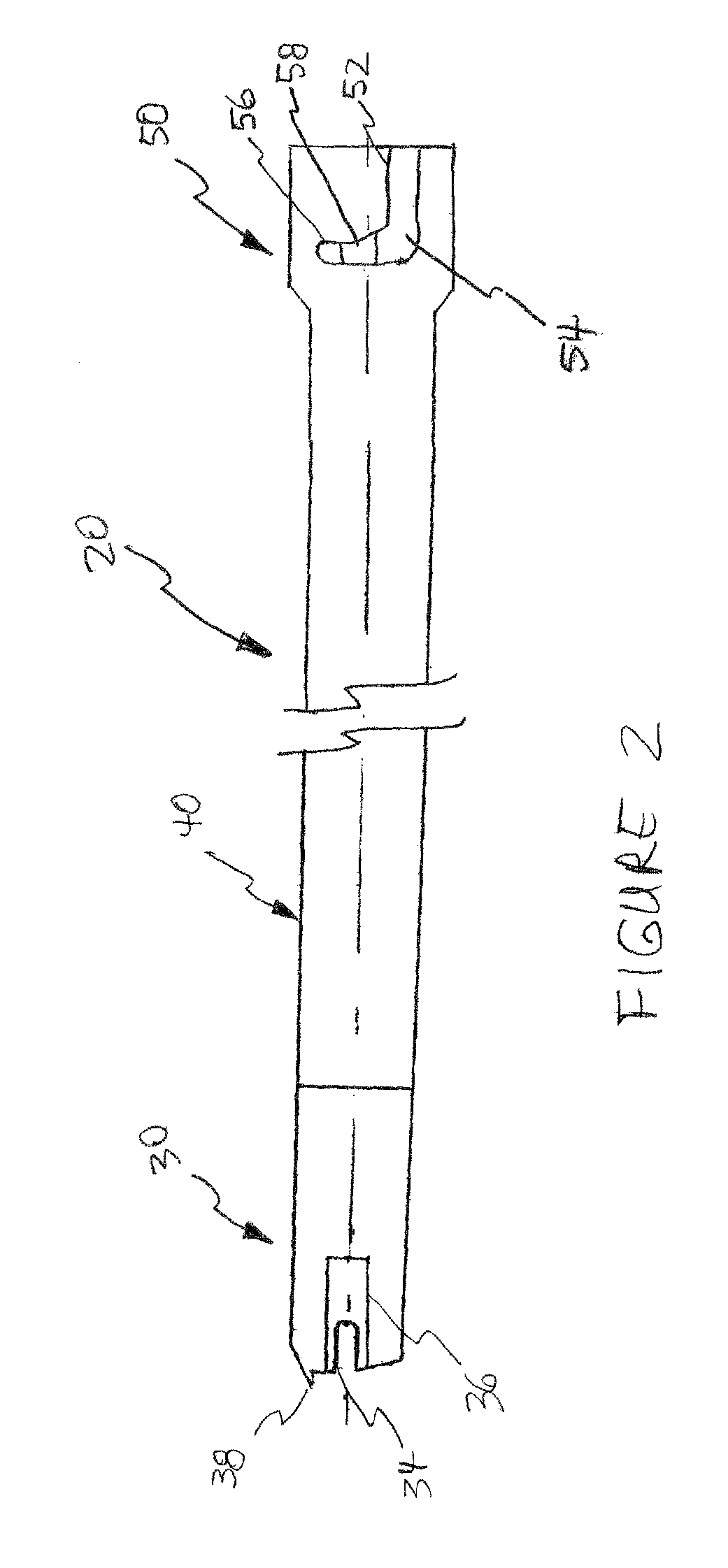Punch-down tool blade with extended reach
a tool blade and extension technology, applied in the field of tools, can solve the problems of bulky tools blocking the view of the terminal clips of tradesmen, difficulty in inserting wires into the terminal clips of patch panels using a standard punch tool blade,
- Summary
- Abstract
- Description
- Claims
- Application Information
AI Technical Summary
Benefits of technology
Problems solved by technology
Method used
Image
Examples
first embodiment
[0021]Referring to the drawings, where like reference numerals generally designate identical or corresponding parts throughout the several views, and more particularly to FIG. 1, there is shown a punch-down tool, more particularly, a punch-down tool blade well suited for seating wires into terminal clips in patch panels, designated generally by the numeral 20.
[0022]The punch-down tool blade 20 includes a working tip section 30, a long slender section 40, and a locking collar section 50. The working tip section 30 includes a seating edge 32, an elongated slot 34, and a groove 36 formed therein, which conforms to the shape of a terminal located on a terminal block (not shown) used in terminating telephone and data conducting wires. The long slender section 40 comprises a length of material having the structural rigidity to transfer forces down its axis without buckling. The locking collar section 50 comprises an L-shaped groove 52 having a lead-in detent 54 and a locking detent 56 on ...
third embodiment
[0026]Referring now to FIG. 3, there is shown a punch-down tool blade having one end, which includes seating edge 32, well suited for the seating wires to terminal clips in patch panels, and another end, which includes seating and cutting edge 38, well suited for the seating and cutting of wires in patch panels. This embodiment incorporates a fixed locking collar section 50 located near the blade tip used less frequently, which is usually the seating tip (most connections are typically of the seating and terminating type). Please note that in FIG. 3 the fixed locking collar section 50 is shown adjacent the blade edge with the seating tip; however, in a related embodiment the fixed locking collar section 50 may be located adjacent the blade edge with the seating and cutting tip. In this related embodiment the L-shaped groove would be oriented such that the “L” in the figure would be pointing up towards the top of the figure to show that fixing the punch-down tool blade to the punch-d...
PUM
| Property | Measurement | Unit |
|---|---|---|
| length | aaaaa | aaaaa |
| length | aaaaa | aaaaa |
| length | aaaaa | aaaaa |
Abstract
Description
Claims
Application Information
 Login to View More
Login to View More - R&D
- Intellectual Property
- Life Sciences
- Materials
- Tech Scout
- Unparalleled Data Quality
- Higher Quality Content
- 60% Fewer Hallucinations
Browse by: Latest US Patents, China's latest patents, Technical Efficacy Thesaurus, Application Domain, Technology Topic, Popular Technical Reports.
© 2025 PatSnap. All rights reserved.Legal|Privacy policy|Modern Slavery Act Transparency Statement|Sitemap|About US| Contact US: help@patsnap.com



